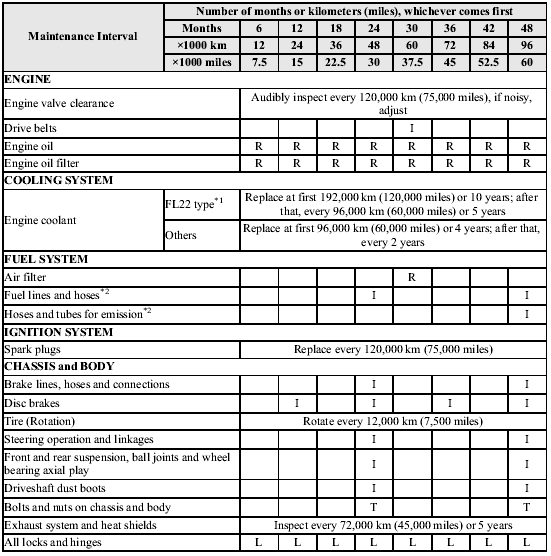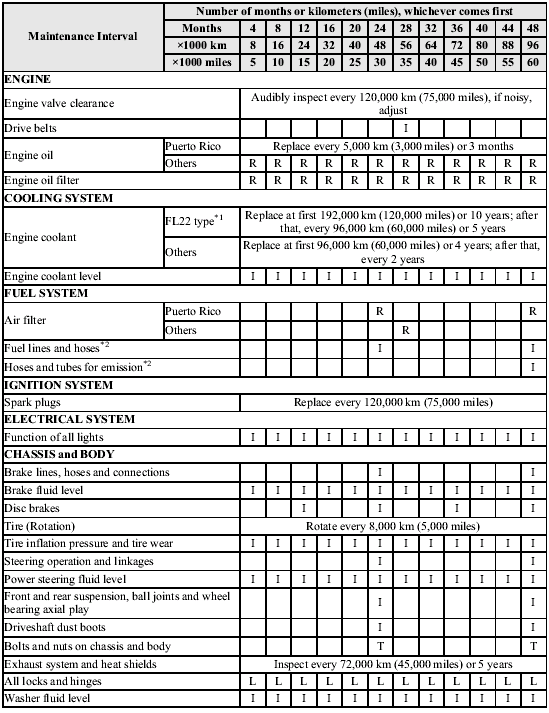Scheduled Maintenance (USA, Canada, and Puerto Rico)
Follow Schedule 1 if the vehicle is operated mainly where none of the
following conditions
apply.
- Repeated short-distance driving.
- Driving in dusty conditions.
- Driving with extended use of brakes.
- Driving in areas where salt or other corrosive materials are used.
- Driving on rough or muddy roads.
- Extended periods of idling or low-speed operation.
- Driving for long periods in cold temperatures or extremely humid climates.
- Driving in extremely hot conditions.
- Driving in mountainous conditions continually.
If any do apply, follow Schedule 2 (Canada and Puerto Rico residents follow Schedule 2).
NOTE.
After the prescribed period, continue to follow the described maintenance at the
recommended
intervals.
Schedule 1


Chart symbols:
I: Inspect: Inspect and clean, repair, adjust, fill up, or replace if necessary.
R: Replace.
L: Lubricate.
T: Tighten.
Remarks:
*1 Use FL22 type coolant in vehicles with the inscription УFL22Ф on the radiator cap itself or the surrounding area. Use FL22 when replacing the coolant.
*2 According to state/provincial and federal regulations, failure to perform maintenance on these items will not void your emissions warranties. However, Mazda recommends that all maintenance services be performed at the recommended time or mileage/kilometer period to ensure long-term reliability.
Schedule 2


Chart symbols:
I: Inspect: Inspect and clean, repair, adjust, fill up, or replace if necessary.
R: Replace.
L: Lubricate.
T: Tighten.
Remarks:
*1 Use FL22 type coolant in vehicles with the inscription УFL22Ф on the radiator cap itself or the surrounding area. Use FL22 when replacing the coolant.
*2 According to state/provincial and federal regulations, failure to perform maintenance on these items will not void your emissions warranties. However, Mazda recommends that all maintenance services be performed at the recommended time or mileage/kilometer period to ensure long-term reliability.
See also:
Manual Type
Some models.
Manual Type
Control Switches
Temperature control dial
This dial controls temperature. Turn it
clockwise for hot and counterclockwise
for cold.
Fan control dial
This dial all ...
Power Windows
The ignition switch must be in the ON
position for the power windows to
operate.
WARNING:
Make sure the opening is clear before
closing a window:
Closing power windows are
dangerous. A person's ...
Engine Oil
NOTE:
Changing the engine oil should be done by an
Authorized Mazda Dealer.
Recommended Oil
Use SAE 5W-30 engine oil.
Oil container labels provide important
information.
A chief contribution th ...


